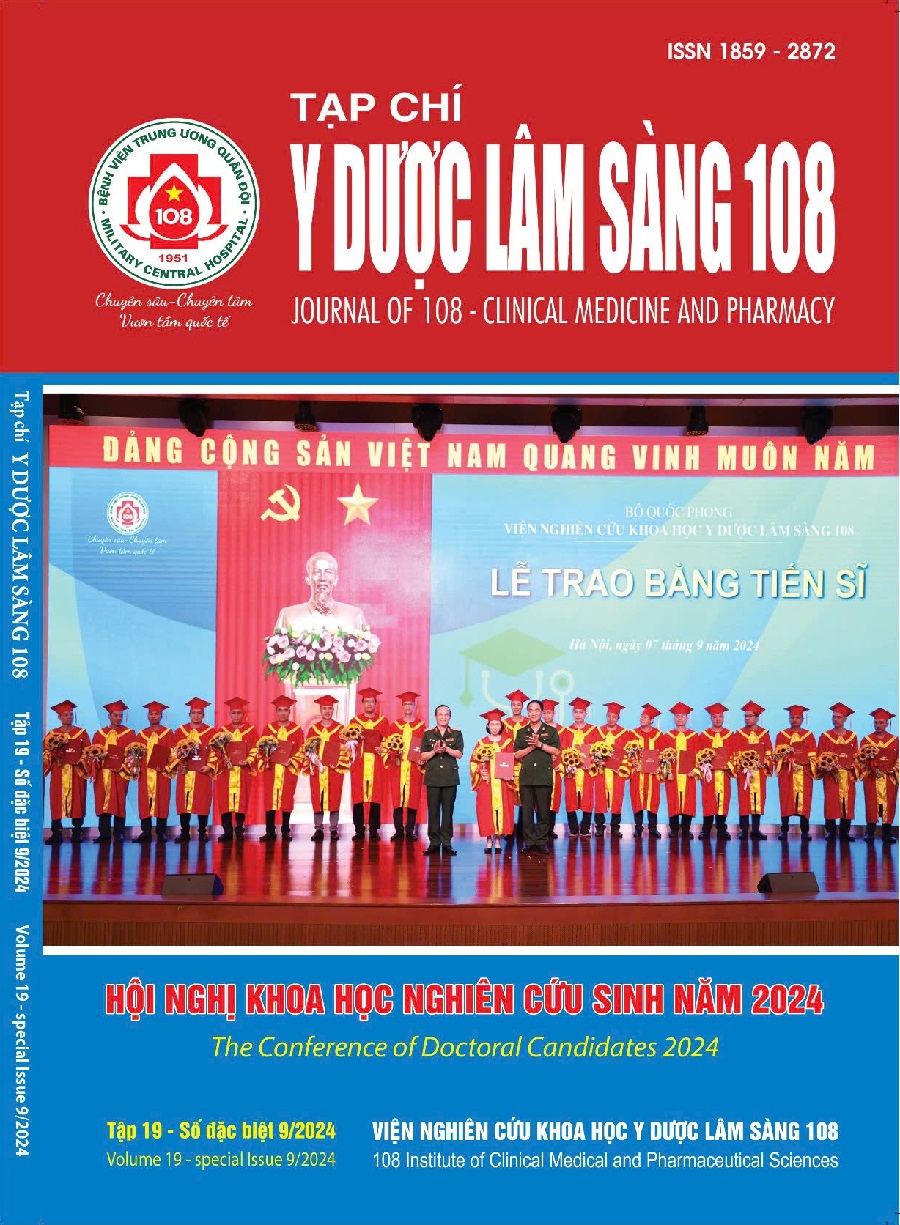Clinical characteristics and treatment outcomes in patients with anaphylaxis at 108 Military Central Hospital
Main Article Content
Keywords
Abstract
Objective: To assess the anaphylaxis clinical characteristics and treatment outcomes. Subject and method: A retrospective cross-sectional study conducted on 83 anaphylaxis patients treated at 108 Military Central Hospital from 01/2022 to 10/2023. The diagnosis of anaphylaxis was based on the criteria of the World Allergy Organization (2019) and the grading system was based on the generalized hypersensitivity criteria of Brown (2004). Data were collected such as comorbidities, anaphylaxis elicitors, clinical symptoms and treatment outcomes. Result: The average age of the study group was 52.34 ± 18.00 years, with males accounting for 46.99%. The most common elicitors for anaphylaxis were medications (51.81%), food (25.30%), contrast media (15.66%). Severity anaphylaxis group was significantly higher in treating with intramuscular adrenalin, intravenous adrenalin and other vasopressors, hospital admission and longer hospital length of stay than moderate anaphylaxis group. Conclusion: Anaphylaxis is a life-threatening emergency, with medications being the leading cause. Early recognition of anaphylaxis based on clinical symptoms is crucial in improving treatment outcomes, reducing hospital stay duration, and decreasing mortality rates.
Article Details
References
2. Kemp SF, Lockey RF, Simons FE (2008) Epinephrine: The drug of choice for anaphylaxis. A statement of the World Allergy Organization. Allergy 63(8): 1061-1070.
3. Turner PJ, Worm M, Ansotegui IJ, El-Gamal Y, Rivas MF, Fineman S et al (2019) Time to revisit the definition and clinical criteria for anaphylaxis? World Allergy Organization Journal 12(10): 100066.
4. Brown SGA (2004) Clinical features and severity grading of anaphylaxis. Journal of Allergy and Clinical Immunology 114(2): 371-376.
5. Yu JE, Lin RY (2018) The epidemiology of anaphylaxis. Clin Rev Allergy Immunol 54(3): 366-374.
6. Worm M, Eckermann O, Dölle S, Aberer W, Beyer K, Hawranek T et al (2014) Triggers and treatment of anaphylaxis: An analysis of 4,000 cases from Germany, Austria and Switzerland. Dtsch Arztebl Int 111(21): 367-375.
7. Sampson HA, Muñoz-Furlong A, Campbell RL, Adkinson NF, Bock SA, Branum A7 et al (2006) Second symposium on the definition and management of anaphylaxis: Summary report—Second National Institute of Allergy and Infectious Disease/Food Allergy and Anaphylaxis Network symposium. Journal of Allergy and Clinical Immunology 117(2): 391-397.
8. Pumphrey R (2004) Anaphylaxis: Can we tell who is at risk of a fatal reaction? Curr Opin Allergy Clin Immunol 4(4): 285-290.
9. Bộ Y tế (2017) Hướng dẫn phòng, chẩn đoán và xử trí phản vệ. Thông tư số 51/2017/TT-BYT.
10. Beyer K, Eckermann O, Hompes S, Grabenhenrich L, Worm M (2012) Anaphylaxis in an emergency setting - elicitors, therapy and incidence of severe allergic reactions. Allergy 67(11): 1451-1456.
11. Shaker MS, Wallace DV, Golden DBK, Oppenheimer J, Bernstein JA, Campbell RL et al (2020) Anaphylaxis-a 2020 practice parameter update, systematic review, and Grading of Recommendations, Assessment, Development and Evaluation (GRADE) analysis. J Allergy Clin Immunol 145(4): 1082-1123.
 ISSN: 1859 - 2872
ISSN: 1859 - 2872
